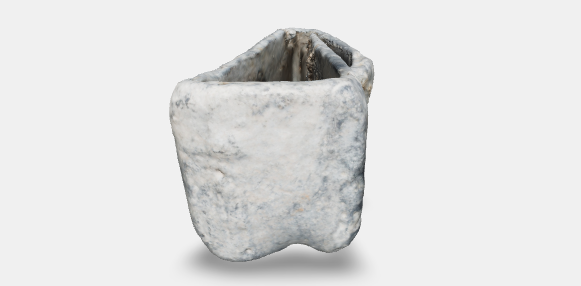Band. Minor dents on the surface. Folded to form a rectangle. The ends were secured with nails. The upper edge is riveted. Interpretable as a reinforcement or a peg for locking a wooden element (1).
The artefact does not present signs of biological colonisation.
MEDAGLIA 2002, p. 168
1 The band may have surrounded the wooden shank of an anchor or maybe used as a ferrule for a beam head. Attribution to a locking key that secured a mobile stock is confirmed by a similar object, belonging to an oak anchor, found in Marina di Tarquinia in 1990: see D’ATRI 1997, p. 90, figg. 1,2. Other examples in SONNO 1997, p. 76 (one from the port of Civitavecchia, the other from Marangone) and in TUSA 1997, p. 68, n. 8 (Isola delle Femmine).
D’Atri V. 1997, Un’ancora di legno dal mare di Tarquinia, in Archeologia Subacquea II, pp. 89-91.
Medaglia S. 2002, Materiali erratici dal mare di Kaulonia, in Archeologia Subacquea, Studi Ricerche, Documenti, III, pp. 163-185.
Sonno M. 1997, Rinvenimenti sottomarini lungo il litorale di Civitavecchia, in Archeologia subacquea II, pp. 75-87.
Tusa S. 1997, Rinvenimenti archeologici subacquei presso Isola delle Femmine (Palermo), in Archeologia Subacquea II, 1997, pp. 65-73.



